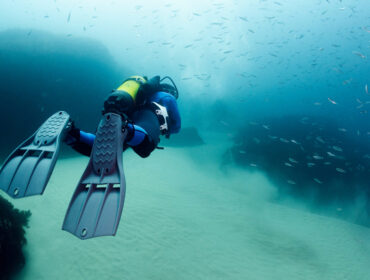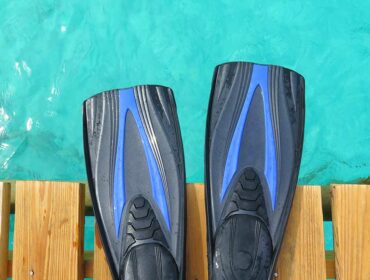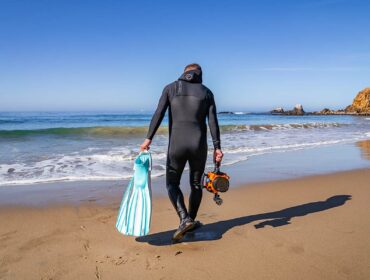If you’re buying SCUBA diving fins for yourself or a friend, you need to know what to look for so you can make the best decision. SCUBA fins get you from point A to point B underwater, get you to the surface at the end of a dive and get you back to the boat safely, so the right fins can make a world of difference.
One item to clear up:
- They are “fins”, not “flippers”. Flippers are things marine animals have, fins are the things we attach to our feet to propel us through the water.
Unfortunately, there aren’t really any “standard features” across all fins, so we’ll just dive into the options!
SCUBA Fin Options
- Heel Type. Fins come with either an open or closed heel. A closed heel means the fin fits directly on your foot and doesn’t leave room for anything more than at most a sock. Open heel fins, as the name suggests, have an open heel. Your foot is held into the fin with a strap. An open heel is more versatile in that just a few sizes can work with a wide variety of foot sizes, but you will want some kind of boot to wear inside the fin. Due to the boot, your foot will typically be warmer in an open heel fin. Closed heel fins can be lighter weight.
- Fin Type.This is one of the most hotly debated gear decisions in the diving industry. The two main contenders are split versus blade fins, but hinged fins should be considered as well.
- Blade fins: These are the traditional style of fin. They are a large, mostly flat surface that extends off your toes. Blade fins can have ridges, vents or a wide variety of features, all designed to give you more power with less effort. If you anticipate moving into technical, cave or wreck diving, these are the de facto standard.
- Split fins: As the name suggests, these fins have a split down the middle. Originally designed to provide similar propulsion as found in marine mammal tales, most people find split fins to be easier on their knees and requiring less effort to get up and going. Divers either love or love to hate split fins, but for people who don’t need a lot of power in their kick, have bad knees, hips or lower back and are more practiced in a traditional swimmers flutter kick, split fins are a great option.
- Hinged fins: Designed to give the easy and quick propulsion of split fins with the sheer power of blade fins, hinged fins are another option for divers. Some divers find them to be the best of both worlds, others find them difficult to feel comfortable in due to the way the hinge works.
- Heel Strap.If you go with open heel fins, you’ll need a strap to keep your fin on your foot. Some straps have buckles that can be levered to quickly tighten them, others have straps that need to be pulled to tighten and others have spring straps that need no adjustment and can be pulled over your heel easily.
Regardless of if you choose blade, split or hinged fins, they will all work fine, but you may need to adapt your kick to the fin slightly. Certain fin types work better in different conditions, so ask your local dive guide for their recommendations.

Optional Accessories
- Spring Straps. If your open heel fins didn’t come with spring straps, they can be added to many fins.
- Clips. If you shore dive, it’s a good idea to acquire accessories that will help you enter and exit the water hands free.
- Gear marker. Fins tend to look very similar, so it’s a good idea to mark your fins so they don’t get confused with others.
- Replacement Strap. If you don’t upgrade to spring straps, consider adding a spare strap in your gear kit. If you fin uses special buckles, for extra redundancy, make sure you get the whole buckle/strap combo.
Testing Your SCUBA Fin
Once you receive your SCUBA fin, there isn’t much to test before getting in the water. Put the fin on your foot (with boots if using open heel fins) and make sure the fin stays on securely. Kick your fin tip around to make sure it stays on your foot.
You now know what to look for when buying your first (or next) pair of SCUBA diving fins!





